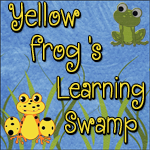So much to think about and so much to consider when planning a lesson. This is a very interesting read. Just sharing thoughts and comments that are not my own.
Thinking Through a Lesson Protocol
By Margaret Schwan Smith, Victoria Bill, & Elizabeth K. HughesThe main purpose of the Thinking Through a Lesson protocol is to prompt you in thinking deeply about a specific lesson that you will be teaching. The goal here is to move beyond the structural components associated with lesson planning (e.g., listing the materials you will need, describing the way students will be grouped, determining teacher actions during the lesson) to a deeper consideration of how you are going to advance students’ mathematical understanding during the lesson. This is not to say that structural components of a lesson are not important, but rather that a focus on structural components alone is not sufficient to ensure that students learn mathematics.
Selecting and Setting up a Mathematical Task
- What are your goals for the lesson? What mathematical content and processes do you hope students will learn from their work on this task?
- In what ways does the task build on students’ previous knowledge? What definitions, concepts, or ideas do students need to know in order to begin to work on the task?
- What are all the ways the task can be solved?
- Which of these methods do you think your students will use?
- What misconceptions might students have?
- What errors might students make?
- How will you ensure that students remain engaged in the task?
- What will you do if a student does not know how to begin to solve the task?
- What will you do if a student finishes the task almost immediately and becomes bored or disruptive?
- What will you do if students focus on non-mathematical aspects of the activity (e.g., spend most of their time making a beautiful poster of their work)?
- What are your expectations for students as they work on and complete this task?
- What resources or tools will students have to use in their work?
- How will the students work -- independently, in small groups, or in pairs -- to explore this task? How long will they work individually or in small groups/pairs? Will students be partnered in a specific way? If so, in what way?
- How will students record and report their work?
- How will you introduce students to the activity so as not to reduce the demands of the task? What will you hear that lets you know students understand the task?
- As students are working independently or in small groups:
- What questions will you ask to focus their thinking?
- What will you see or hear that lets you know how students are thinking about the mathematical ideas?
- What questions will you ask to assess students’ understanding of key mathematical ideas, problem-solving strategies, or the representations?
- What questions will you ask to advance students’ understanding of the mathematical ideas?
- What questions will you ask to encourage students to share their thinking with others or to assess their understanding of their peer’s ideas?
Sharing and Discussing the Task
- Which solution paths do you want to have shared during the class discussion in order to accomplish the goals for the lesson?
- Which will be shared first, second, etc.? Why?
- In what ways will the order of the solution paths help students make connections between the strategies and mathematical ideas?
- What will you see or hear that lets you know that students in the class understand the mathematical ideas or problem-solving strategies that are being shared?
- How will you orchestrate the class discussion so that students:
- make sense of the mathematical ideas being shared?
- expand on, debate, and question the solutions being shared?
- make connections between their solution strategy and the one shared?
- look for patterns and form generalizations?
- What extensions to the task will you pose that will help students look for patterns, make connections or form a generalization?
References
Smith, M.S., Bill, V., & Hughes, E.K. (2008). Thinking through a lesson: Successfully implementing high-level tasks. Mathematics Teaching in the Middle School, 14(3), 132-138.













